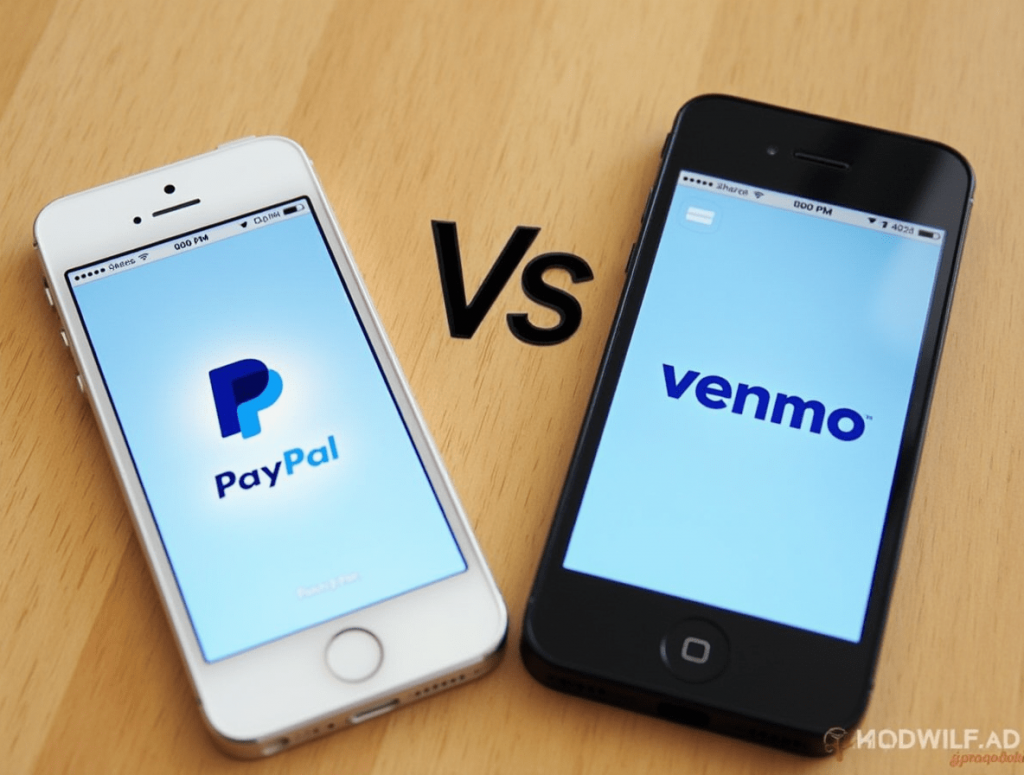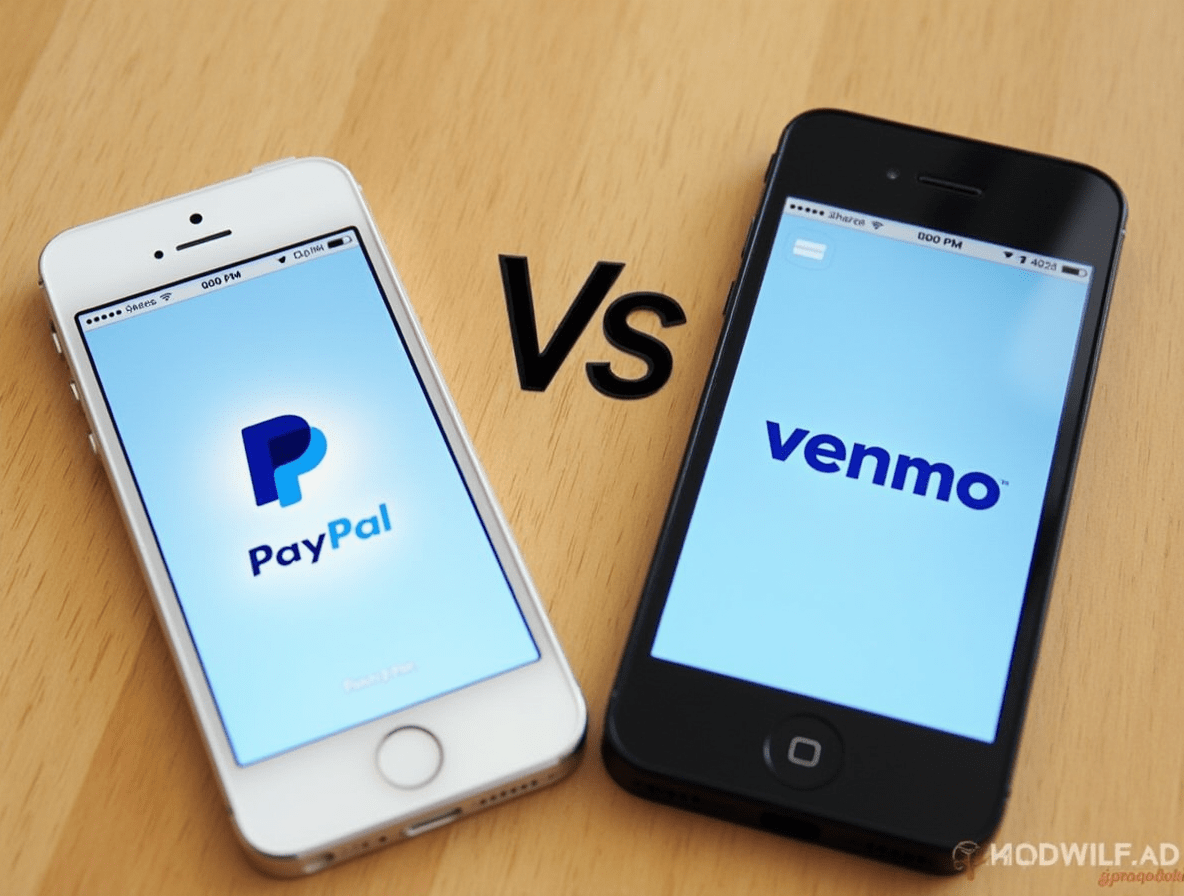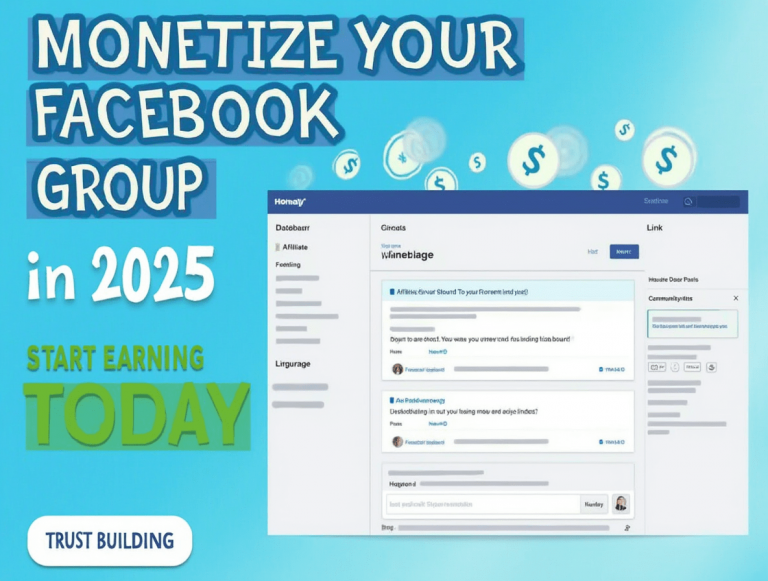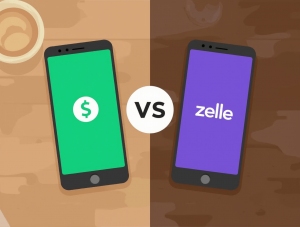
Which Digital Payment Service Is Right for Your Needs?
In today’s increasingly cashless society, digital payment platforms have become essential tools for managing our finances. PayPal and Venmo stand as two of the most popular options, each with millions of active users. While both services allow you to send and receive money electronically, they have distinct features, fee structures, and use cases that might make one better suited for your specific needs.
Whether you’re splitting dinner bills with friends, paying for online purchases, or managing business transactions, choosing the right payment platform can save you time, money, and potential headaches. This comprehensive comparison will help you understand the key differences between PayPal and Venmo, examining their features, security measures, fees, and ideal use cases to help you make an informed decision.
The Origins and Evolution of Digital Payments
PayPal: The Established Pioneer
PayPal emerged in the late 1990s as one of the first digital payment solutions, officially launching in 1998. Originally known as Confinity, the company merged with X.com (an online banking company founded by Elon Musk) before rebranding as PayPal in 2001. The platform gained widespread recognition as eBay’s primary payment processor before being acquired by the e-commerce giant in 2002. In 2015, PayPal became an independent company again through a spinoff.
With over 430 million active accounts worldwide, PayPal has established itself as a comprehensive payment solution for both personal and business use. The service has continually evolved, adding features like buyer and seller protection, cryptocurrency trading, and integration with numerous e-commerce platforms.
Venmo: The Social Payment Newcomer
Venmo was founded in 2009 as a text message-based payment service before launching as a mobile app in 2012. Interestingly, PayPal acquired Venmo (as part of its Braintree acquisition) in 2013, making the two services part of the same corporate family.
Venmo distinguished itself by incorporating social networking elements into the payment experience. Users can share transaction notes (minus the amount) on a social feed, adding a unique community aspect to the platform. With its more casual interface and social features, Venmo quickly gained popularity among younger users, particularly for peer-to-peer transactions.
Key Features Comparison
PayPal: Comprehensive Payment Solution
PayPal offers a robust set of features designed for both personal and business use:
- Global Reach: Available in more than 200 countries and supports 25+ currencies
- Purchase Protection: Covers eligible purchases if they don’t arrive or don’t match their description
- Seller Protection: Safeguards merchants against fraudulent transactions and chargebacks
- Business Tools: Invoicing, recurring payments, payment buttons, and payroll services
- Credit Options: PayPal Credit and PayPal Cashback Mastercard
- Cryptocurrency Support: Buy, sell, and hold Bitcoin, Ethereum, and other cryptocurrencies
- Checkout Integration: Seamless integration with millions of online merchants
- Donation Management: Tools for nonprofits to collect and manage donations
PayPal functions essentially as a complete financial ecosystem, allowing users to make purchases, receive payments, and even maintain a balance within the platform that can be transferred to linked bank accounts.
Venmo: Social-First Peer-to-Peer Payments
Venmo’s feature set emphasizes simplicity and social interaction:
- Social Feed: Public, friends-only, or private transaction sharing options
- QR Code Payments: Scan codes to pay or receive money quickly
- Venmo Card: Physical debit card linked to your Venmo balance
- Split Bills: Easily divide expenses among multiple people
- Business Profiles: For small businesses and side hustles
- Cash Back Rewards: Special offers at select merchants
- Gift Wrapping: Add visual elements to money sent as gifts
- Cryptocurrency Trading: Buy, sell, and hold select cryptocurrencies
Venmo’s interface prioritizes the peer-to-peer payment experience, making it exceptionally quick and easy to send money to friends and family or split expenses.
Fee Structure Analysis
Understanding the fee structures of both platforms is crucial for determining which service might be more economical for your typical usage patterns.
PayPal Fees
PayPal’s fee structure can be complex, varying by transaction type:
- Personal Transactions: Free when funded by PayPal balance or bank account; 2.9% + $0.30 when using credit or debit cards
- Instant Transfers: 1.75% of the transfer amount (minimum $0.25, maximum $25)
- Standard Transfers: Free (1-3 business days)
- International Transfers: Additional 3-4% currency conversion fee
- Commercial Transactions: 2.99% + $0.49 for online sales; 2.29% + $0.09 for in-person QR code transactions
- Cryptocurrency Transactions: Spread-based fee structure (varies by cryptocurrency)
PayPal’s more extensive fee structure reflects its broader range of services and business-oriented features.
Venmo Fees
Venmo’s fee structure is generally simpler:
- Standard Person-to-Person Transfers: Free when using Venmo balance, bank account, or debit card
- Credit Card Transfers: 3% fee
- Instant Transfers: 1.75% of the amount (minimum $0.25, maximum $25)
- Standard Transfers: Free (1-3 business days)
- Business Transactions: 1.9% + $0.10 for purchases from authorized merchants
- Check Cashing: 1% ($5 minimum) for payroll/government checks; 5% ($5 minimum) for other checks
- ATM Withdrawals: $2.50 fee (plus any fees from ATM owner)
For basic peer-to-peer transactions using bank accounts or debit cards, Venmo typically offers free transfers, making it cost-effective for splitting bills or repaying friends.
Security Measures and Privacy Considerations
Both PayPal and Venmo implement significant security measures, but with different approaches to privacy.
PayPal Security Features
PayPal employs industry-standard security protocols:
- Encryption: End-to-end encryption for all transactions
- Fraud Monitoring: 24/7 transaction monitoring with advanced algorithms
- Two-Factor Authentication: Optional additional security layer
- Account Protection: Email confirmations for account changes
- Data Centers: Secure, PCI-compliant infrastructure
- Privacy: Transactions are always private
- Dispute Resolution: Formal process for addressing transaction issues
- FDIC Insurance: For PayPal balances through partner banks
PayPal’s security approach emphasizes complete privacy and robust protections for both buyers and sellers.
Venmo Security Features
Venmo combines strong security with social features:
- Encryption: Bank-grade encryption for financial information
- PIN Code: Optional PIN protection for app access
- Social Privacy Settings: Control who can see your transactions (public, friends-only, or private)
- Multi-Factor Authentication: Additional verification methods
- Identity Verification: Required for certain transaction amounts
- Account Monitoring: Fraud detection systems
- In-App Support: Customer service through the mobile application
- FDIC Insurance: For Venmo balances through partner banks
Venmo’s default social sharing of transaction notes (but not amounts) represents a significant privacy difference from PayPal, though users can adjust these settings to make all transactions private.
Ideal Use Cases: When to Choose Each Platform
Understanding when to use each service can help you maximize their benefits while minimizing costs.
When PayPal Makes More Sense
PayPal typically proves more advantageous in these scenarios:
- Online Shopping: With millions of integrated merchants and buyer protection
- International Transactions: With support for multiple currencies and countries
- Business Operations: For invoicing, recurring payments, and merchant services
- High-Value Transactions: Due to higher transaction limits and robust security
- Marketplace Selling: For platforms like eBay, Etsy, and other online marketplaces
- Charitable Donations: With built-in nonprofit tools and tax receipt capabilities
- Customer Refunds: With formalized dispute resolution processes
- Privacy Concerns: When you prefer completely private financial transactions
PayPal’s comprehensive feature set makes it particularly well-suited for business use and formal financial transactions.
When Venmo Is the Better Choice
Venmo excels in these situations:
- Splitting Bills: Dinner checks, household expenses, group gifts
- Roommate Payments: Rent, utilities, and shared supplies
- Social Events: Concert tickets, group trips, and outings
- Small Business Services: For side hustles and informal businesses
- Younger Demographics: When transacting with users who primarily use Venmo
- Quick Transfers Between Friends: When simplicity and speed are priorities
- Social Connections: When you enjoy the community aspect of payments
- Low-Value, Frequent Transactions: For regular, smaller amounts
Venmo’s streamlined interface and social components make it ideal for casual, personal transactions between friends and family.
Integration and Compatibility
Both services offer various ways to connect with other financial tools and platforms.
PayPal Integration Options
PayPal offers extensive integration capabilities:
- E-commerce Platforms: Shopify, WooCommerce, Magento, and many others
- Accounting Software: QuickBooks, Xero, FreshBooks
- Point-of-Sale Systems: Various retail and restaurant POS solutions
- Donation Platforms: For nonprofits and fundraising
- Invoice and Billing Systems: For recurring payments and subscriptions
- Email Marketing Tools: For payment buttons in campaigns
- Mobile Apps: SDK for developers to integrate PayPal into apps
- Google Pay and Samsung Pay: Expanded payment options
This comprehensive integration ecosystem makes PayPal particularly valuable for businesses and organizations.
Venmo Integration Options
Venmo’s integration options focus on personal finance and social connections:
- Select Online Merchants: Growing number of Venmo-accepting websites
- Mobile Apps: Ride-sharing, food delivery, and ticket services
- Social Media Platforms: Share payments across platforms
- Venmo Debit Card: Works anywhere Mastercard is accepted
- Cash Back Offers: Partner merchant rewards programs
- Splitting Apps: For group expenses and household management
- QR Code Integration: For contactless payments
- Game and Entertainment Platforms: For in-app purchases and subscriptions
Venmo continues to expand its merchant acceptance, though it still lags behind PayPal’s widespread integration.
Mobile Experience and User Interface
The user experience differs significantly between the two platforms, reflecting their different priorities and target audiences.
PayPal Mobile Experience
PayPal’s mobile app emphasizes functionality and comprehensive features:
- Business-Oriented Design: Practical, straightforward interface
- Dashboard Overview: Quick access to balance and recent activity
- Multiple Account Management: Switch between personal and business accounts
- Complete Transaction History: Detailed records and statements
- Robust Settings: Extensive customization options
- Financial Management Tools: Budgeting and spending insights
- International Features: Currency conversion and cross-border payment tools
- Notification Controls: Customizable alert settings
The PayPal app provides comprehensive functionality but can feel more complex than Venmo’s streamlined interface.
Venmo Mobile Experience
Venmo’s app prioritizes social interaction and simplicity:
- Social Feed: Activity stream of friends’ public transactions
- Emoji Support: Add visual elements to payment descriptions
- Clean, Minimalist Design: Focus on the core payment experience
- One-Touch Payments: Quick access to frequent contacts
- Customizable Profile: With username and profile picture
- Split Bill Calculator: Built-in functionality for dividing expenses
- Search Functionality: Find friends and past transactions easily
- Dark Mode Support: For visual preference and battery saving
Venmo’s interface feels more modern and socially oriented, catering to users who value simplicity and community features.
Making Your Decision: Key Considerations
When deciding between PayPal and Venmo, consider these factors:
- Primary Use Case: Business versus personal transactions
- Transaction Privacy: Social sharing preferences versus complete privacy
- Fee Structure: Based on your typical transaction types and funding sources
- International Needs: Cross-border capabilities and currency support
- Integration Requirements: Compatibility with other platforms and services
- User Base: Which service your frequent contacts primarily use
- Account Limits: Transaction and balance limits for your needs
- Business Features: Invoicing, recurring payments, and merchant tools
For many users, maintaining accounts on both platforms offers the greatest flexibility, using each service for its relative strengths.
Recent Developments and Future Trends
Both platforms continue to evolve, adding new features and capabilities:
PayPal’s Recent Innovations
- Cryptocurrency Expansion: Broader support for digital currency transactions
- Buy Now, Pay Later: Growth of PayPal’s installment payment options
- Enhanced Business Tools: More robust solutions for merchants
- Contactless Payment Solutions: In response to changing consumer preferences
- AI-Powered Fraud Detection: Strengthened security measures
- International Expansion: Continued growth in global markets
- Super App Development: Moving toward comprehensive financial services
- Enhanced Mobile Checkout: Streamlined payment experiences
Venmo’s Latest Features
- Business Profiles: Expanded tools for small businesses and entrepreneurs
- Enhanced Privacy Controls: More options for transaction visibility
- Crypto Trading: Bitcoin, Ethereum, and other cryptocurrency support
- Cash Back Rewards: Expanded partner merchant programs
- Credit Card Offering: Venmo-branded credit card with cash back
- Direct Deposit: Early access to paychecks
- Expanded Merchant Acceptance: Growing network of Venmo-accepting businesses
- Teen Accounts: Supervised accounts for younger users
Both platforms are clearly moving toward becoming more comprehensive financial services, though with different approaches and target audiences.
Conclusion: Choosing the Right Platform for Your Needs
Both PayPal and Venmo offer valuable digital payment services, but they excel in different contexts. PayPal remains the more comprehensive solution for business use, online shopping, and international transactions, with robust security features and buyer/seller protections. Its more extensive fee structure reflects its broader range of services.
Venmo shines in the peer-to-peer space, offering a streamlined, social-oriented experience that’s perfect for splitting bills, paying friends, and managing shared expenses. Its simpler interface and generally lower fees for basic transactions make it attractive for regular, smaller payments within your social circle.
Many users find value in maintaining accounts on both platforms, using PayPal for more formal or business-related transactions and Venmo for casual exchanges with friends and family. As digital payment services continue to evolve, both platforms are likely to expand their features while maintaining their distinct approaches to the payment experience.
Ultimately, your choice between PayPal and Venmo should align with your typical transaction patterns, privacy preferences, and whether you value comprehensive features or streamlined simplicity in your digital payment solution.
Frequently Asked Questions
Can I use both PayPal and Venmo?
Yes, you can maintain accounts on both platforms and use each for different purposes. Many users have both apps, using PayPal for business or online shopping and Venmo for personal transactions with friends.
Which service offers better security?
Both PayPal and Venmo employ strong security measures, including encryption and fraud monitoring. PayPal offers more extensive buyer and seller protections, while Venmo provides flexible privacy settings for transaction visibility.
Can I transfer money between PayPal and Venmo?
There’s no direct integration between PayPal and Venmo despite being owned by the same parent company. To move money between the platforms, you’ll need to transfer funds to a linked bank account first, then move them to the other service.
Which service has lower fees?
For basic peer-to-peer transfers using bank accounts or debit cards, Venmo typically offers free transfers. PayPal charges fees for commercial transactions and certain personal transfers. Both charge for instant transfers and credit card funding.
Which platform works internationally?
PayPal has much stronger international capabilities, operating in over 200 countries and supporting 25+ currencies. Venmo is primarily limited to U.S. users and transactions.
Are PayPal and Venmo balances FDIC insured?
Both services offer FDIC insurance on balances through their banking partners, providing protection up to standard FDIC limits.
Can businesses use Venmo?
While Venmo now offers business profiles, PayPal provides more comprehensive business tools, including invoicing, subscriptions, and extensive e-commerce integration. Venmo is better suited for small businesses and side hustles with casual customer relationships.
Which platform is better for splitting bills?
Venmo’s interface is specifically designed for splitting expenses, making it more convenient for dividing dinner checks, household bills, and group expenses among friends.














